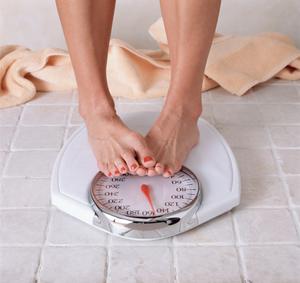 A few weeks ago, nearly everyone in my office was cleansing. All around me, colleagues detoxing from sugar, caffeine, gluten, fat – you name it – belched $10 kale juice, while I drank Diet Coke and scarfed down all manner of “bad” carbs. At home, I consumed too much wine and snacks, slept badly and skipped the gym.
A few weeks ago, nearly everyone in my office was cleansing. All around me, colleagues detoxing from sugar, caffeine, gluten, fat – you name it – belched $10 kale juice, while I drank Diet Coke and scarfed down all manner of “bad” carbs. At home, I consumed too much wine and snacks, slept badly and skipped the gym.
I’m not sure what got into me, but I had taken a pronounced detour from the detoxers, and my “thin” clothes that I’d worked so hard to fit into last year, had become a pretty tight squeeze.
Then I hit the trifecta. Or did I enter the Bermuda triangle? Not sure, I suppose time will tell.
First, I read The Shift: How I Finally Lost Weight and Discovered a Happier Life, by Tory Johnson. The book received mixed reviews, but I’d heard it was a fast read so…
Tory’s story begins on the day she is “invited” to breakfast with a senior executive at ABC, where she is a weekly contributor at Good Morning America. Tory knows what’s coming: She’s about to be told to get thin – or else. Because she is the primary breadwinner for her family, she decides to finally get serious about food issues she’s struggled with since childhood. The Shift tracks her one-year weight loss journey.
I’d be fibbing if I said I enjoyed the book overall. For starters, it is a chronological account that resembles a monthly journal. That’s a writing style I don’t care for to begin with, plus let’s face it: Diets (the non-fad ones, anyway) are monotonous as they stretch over months and months. That’s why diets are so hard, they are relentless! Who wants to read about one, blow-by-blow?
Also, Tory can be a little cheesy, like when she waxes romantic about how losing weight improved her sex life with her husband. It’s enough to make a Harlequin romance writer roll her eyes. On this topic I say, less is more.
That said, the book is unique in that it makes no promises, and offers no gimmicks. In Chapter 11, Tory acknowledges “the delusion of a quick and easy fix… There is no instant gratification, just hard work and patience.” This is not the message most folks who buy diet books want to receive, so I applaud her for not pulling punches.
Even if the writing is not inspired, The Shift is unique in that its focus is mostly on what’s going on in Tory’s head, rather than the physiology of weight loss, or tricks and shortcuts to losing 50 pounds in an absurdly brief period of time. If you have ever struggled with your weight, you might recognize some of her patterns – which she sheds, one by one.
Food for me, now, is fuel. It does not have to be amazing, entertaining or exciting. Each meal does not have to be like a trip to the county fair or a fantasy segment of Top Chef. I’ve had enough “Wow!” meals to last a lifetime. I want a different set of “wows” now.
How many times have we heard a friend (or ourselves) promise they’ll start a diet tomorrow, because tonight’s meal (with extra bread, butter, wine and dessert) is “special”? Tory Johnson may not be in line for a Pulitzer, but she’s a pretty good truth teller.

If The Shift provided food for thought, it was just an appetizer. I followed it up with the movie Fed Up, a stinging indictment of the food industry lobby, and government agencies such as the US Department of Agriculture, for their contribution to America’s obesity epidemic. As with The Shift, the information provided in Fed Up is not all new. Most of us know by now that sugar – in all its sneaky forms – is unhealthy. It’s been linked to cancer, heart disease, diabetes, etc. But there were still a few gob-smack moments for me.
I felt sick as loving, well-meaning parents featured in the film fed their families “low fat” processed foods, loaded with sodium and sugar to make them taste good. It was heartbreaking to watch their obese children sob in confusion, because they were getting heavier despite making what they thought were good food choices. The kids believed the advertisements for reduced fat products, and blamed themselves for their lack of weight loss success.
I was also struck by a rather obvious question posed by producers: Have you ever wondered why food labels list the recommended daily allowance of all kinds of ingredients, except sugar? (Um, no. Sadly, I never even wondered.) The fact is, most processed, packaged foods contain more than the recommended daily amount — six teaspoons for me. Telling consumers this might interfere with consumption, so the food industry lobby has opposed such transparency.
So today I embarked on the 10-day Fed Up sugar-free challenge, applying greater scrutiny to food labeling than I ever have before – and it’s already super freaking hard! Day one’s excruciating a-ha moment: Even plain Greek yogurt has sugar. In some cases, a lot of it. My favorite brand is Athena, which has eight grams of sugar. That’s one third my target maximum for a NORMAL day.
I’m a diehard (or hardboiled?) egg lover, but I am not sure I can eat eggs for breakfast for the next 10 days. Face Greek yogurt has just four grams of sugar per serving (one sixth of my recommended daily amount) and there’s some in my fridge…
Oh yeah, this thing will be hard.
Part three of my trifecta: for the past two days San Francisco bus and subway drivers have held a “sick out”, leaving passengers waiting up to one hour for a ride to work. I sometimes walk home in the summer, but have always steadfastly refused to consider walking TO work. (I’ll get too sweaty! My hair will go nuts in the fog! I have too much to carry! I’m wearing the wrong shoes!)

This week, I’ve had no choice but to walk, and of course it’s been fine. I show up at work with more energy, and according to my Jawbone Up the round trip pushes me past my daily goal of 10,000 steps, even if I’m a total slug for the remaining 22 hours of the day. Commuting on foot also offers stunning reminders of my good fortune, to live in such a beautiful city.
I can’t promise I’ll walk to and from work every day, once MUNI drivers go back to work. But my new goal is to walk at least one direction.
Sometimes we are inspired to change. At other times, change is thrust upon us. Right now, I’ve got a little bit of both going on – and I’m trying to grab on with both hands.
Seriously, though. Can anyone recommend a sugar-free Greek yogurt? Does such a thing even exist? (FYI, I draw the line at buying my own cow. Or goat.)

Great post, Kim. Unfortunately, at the moment, food labels don’t distinguish between sugars. So in plain Greek yogurt, for example, there is no added sugar. The sugar on the label comes naturally from the lactose in the milk. Best is to read the list of ingredients to see if there are added sugars. The food label will undergo a change whereby sugars will be broken out into “sugars” and “added sugars”.
Forgive me for taking so long to approve this comment. I was seeing a man about a cow…
Thank you for that info, that does make more sense although the Fed Up folks consistently refer to “yogurt” as having sugar, rather than “flavored”, “sweetened” or “fruit” yogurt, all things I have traditionally avoided. I’m glad that the labels will change in the future, to make it easier to distinguish how much sugar is “added”.